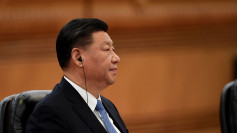Ukrainian President Volodymyr Zelensky is set to present a comprehensive "victory plan" aimed at bringing an end to the 2.5-year war with Russia during his highly anticipated visit to the U.S. this week. Zelensky's diplomatic and military push comes at a critical time in the conflict, as he seeks to secure additional military support and diplomatic backing from President Joe Biden, Congress, and the leading U.S. presidential candidates, Vice President Kamala Harris and former President Donald Trump.
Zelensky, who has been vocal about the crucial role the upcoming months will play in determining the outcome of the war, arrived in the U.S. on Sunday and is expected to present his strategy for victory during his discussions with Biden later in the week. According to Zelensky, Biden will be the first to see the full details of the plan, which includes increasing arms supplies, ramping up diplomatic efforts to force Russia into peace talks, and holding Moscow accountable for its 2022 invasion of Ukraine.
A Comprehensive Victory Plan
Zelensky's plan, as outlined in recent statements, revolves around three key components: securing more advanced weapons for Ukraine, building international diplomatic pressure on Russia, and pursuing legal avenues to hold Russia accountable for war crimes and its invasion. His request for additional long-range missiles has been a focal point, as Ukraine seeks to strike deeper into Russian territory in an attempt to disrupt Moscow's supply lines and weaken its offensive capabilities.
"This autumn will determine the future of this war," Zelensky wrote in a social media post ahead of his visit, emphasizing the importance of military and diplomatic action over the next few months. He added that Ukraine and its allies must "strengthen positions" to ensure a "shared victory for a truly just peace."
Despite ongoing appeals from Kyiv, the Biden administration has so far resisted calls to allow Ukraine to use U.S.-supplied long-range weapons to strike inside Russia, citing concerns over escalating the conflict. When asked by reporters on Sunday if he had made a decision regarding the use of such weapons, Biden tersely responded, "No."
Appeals to U.S. Leaders and Global Diplomacy
In addition to his meetings with Biden, Zelensky plans to present his strategy to Congress and both major candidates in the upcoming U.S. presidential election-Vice President Kamala Harris and former President Donald Trump. Harris has been a steadfast supporter of Ukraine's defense efforts, while Trump has expressed more ambivalence, criticizing the scale of U.S. financial support for Ukraine and praising Russian President Vladimir Putin.
Trump, who has previously floated his own vague plan to end the war "within 24 hours" if re-elected, has been less forthcoming with details on how he would approach the Ukraine conflict. Hungarian Prime Minister Viktor Orbán, a close ally of Trump, claimed earlier this year that Trump had promised to withhold further U.S. aid to Ukraine, a strategy Orbán suggested would bring an end to the conflict. Trump has not confirmed this position.
Despite Trump's skepticism, Zelensky remains committed to engaging with all potential U.S. leaders to ensure continued support for Ukraine's war effort. The U.S. has been Ukraine's largest foreign donor, having provided $56 billion in military aid since the start of the war.
Zelensky's U.S. Itinerary
Zelensky's trip includes several high-profile stops. On Sunday, he visited the Scranton Army Ammunition Plant in Pennsylvania, a key supplier of artillery shells for Ukraine's forces. During the visit, Zelensky praised the plant's contributions to Ukraine's defense, noting that "in places like this, you can truly feel that the democratic world can prevail."
The Ukrainian president will continue his U.S. tour with a speech at the United Nations General Assembly in New York on Wednesday. He is expected to meet with several U.N. officials and discuss Ukraine's situation with members of the U.N. Security Council, where he will further push for international support to hold Russia accountable and to expedite diplomatic negotiations.
However, Russia remains defiant, refusing to attend any peace talks unless Ukraine agrees to cede four southeastern regions currently under Russian occupation. Russian officials have maintained that their demands must be met for any ceasefire or peace deal to occur.
Potential for Diplomatic Breakthrough
One of the key elements of Zelensky's plan involves a new round of peace talks, which he hopes to initiate in November. While the Ukrainian leader is optimistic about gaining support from Western allies, Russia's refusal to participate casts doubt on the potential success of these negotiations. Nevertheless, Zelensky is pushing forward, encouraging all parties to engage in talks aimed at achieving a just and lasting peace.
As Zelensky makes his case to U.S. leaders, his overarching goal is to solidify Ukraine's military gains and push back against Russian advances. The Ukrainian leader's visit comes at a time when Kyiv's forces are holding onto parts of eastern Ukraine while making strategic gains in other areas.






